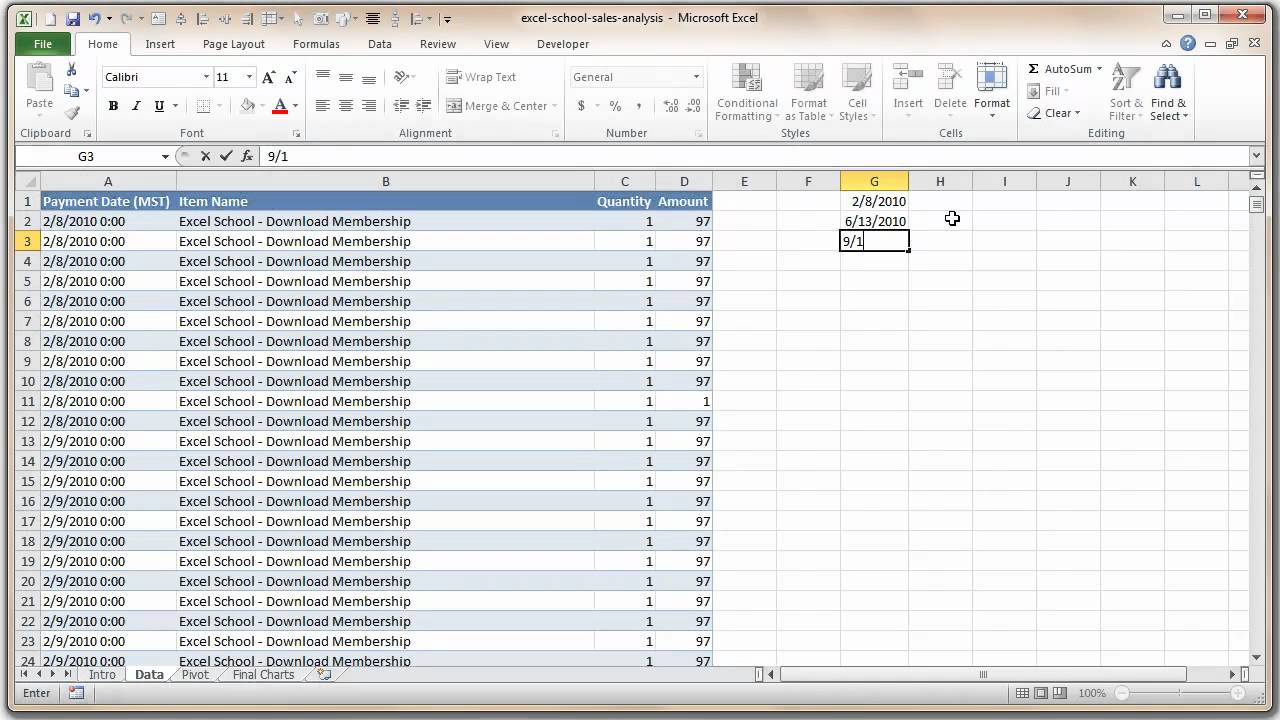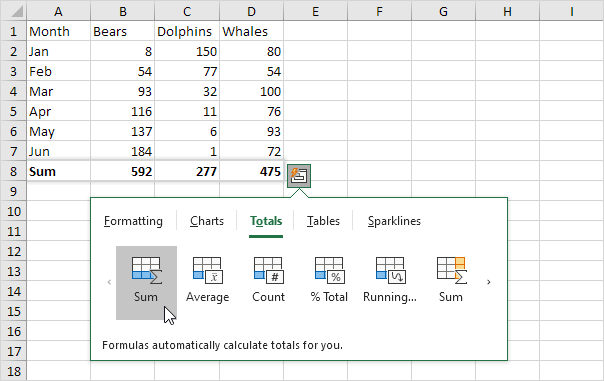

Is there an Easy Excel Tool for Quick Data Analysis? Alternatively, it can appear as a progress bar to track how close a value is to a targeted goal. It can be a line chart to see how the data has trended over time. A sparkline is a simple but helpful visualization. You can add a Sparkline at the end of a row or column to see how the data in that selection has progressed. When the PivotTable is created, you will have to enter your data into a blank table. You can also choose to create a PivotTable. When creating a table from the data, you’ll also be shown a preview, similar to the Charts menu.

Data is often entered without any thought to order or readability, especially when imported from other sources. It’s perfect for filtering, sorting and summarizing your data. Tables is arguably one of the most useful options in the Quick Analysis toolbar. It’s a lot faster than entering the calculations by hand. The Quick Analysis toolbar makes it easy to calculate these values. You have a few different functions to choose from, such as Sum, Average, Count and more. Totals can be used to run basic calculations of numbers in selected columns or rows. By hovering your mouse over an option, you can see a preview of what the chart will look like based on the data you’ve selected. If you click Charts on the Quick Analysis toolbar, there are recommended charts for the data you have preselected. Meanwhile, line charts are good at looking at trend data over long time periods. There are charting options that suit different types of data.įor instance, bar charts are superb for comparing values between categories. You’ll see the Quick Analysis tool button appear at the bottom-right of your selected data.Ĭharts are used to display data visually. To access the Quick Analysis tool for Excel, select the cells that contain the data you want to analyze. Accessing Quick Analysis Toolbar in Excel It is much easier to see trends than to calculate them. When you visualize the numbers in your spreadsheet, it makes the insights more accessible. You can even use Quick Analysis to make basic charts and diagrams of your data. When you click the Quick Analysis tool, you receive several options to help you make sense of the data.Įssentially, the Quick Analysis tool in Excel shows overview-level insights about your data. This feature makes it easier to see trends and relationships between data points. This is where the Quick Analysis tool in Excel can help. With this overload of numbers and data, it is difficult to see those valuable insights that help generate new customers.

Let’s say you have an Excel spreadsheet with your marketing campaign metrics. Excel spreadsheets can be significantly more sophisticated and powerful. Making an expense spreadsheet is just the surface. With a simple formula, the spreadsheet detects that this person has $960 left to spend each month after their expenses are paid. Here’s a simple budget analysis that shows someone’s monthly expenses versus their salary. Even if you aren’t using Excel for marketing data analysis, you’re probably using some form of spreadsheets in your accounting. Spreadsheets are still by far one of the most useful tools for tracking and organizing numbers and other information. It’s almost impossible to find a modern company that does not use Excel in some capacity. The program can chart data, perform complex computations, generate pivot tables and so much more.



 0 kommentar(er)
0 kommentar(er)
